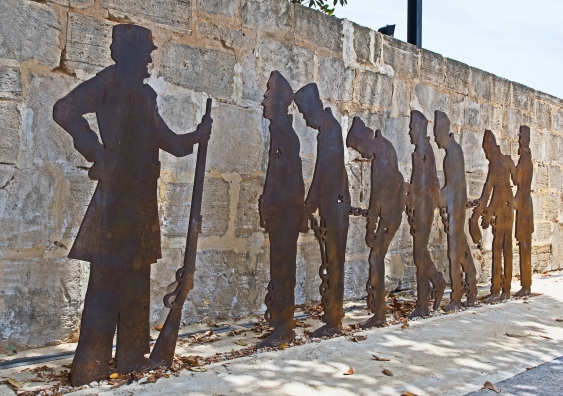by PAULINE GROSJEAN

It has been a momentous, demanding few weeks for Australia. Amid growing revelations of sexual assaults and toxic workplaces and people taking to the streets to voice their anger and frustration, it’s possible we are finally facing a reckoning on gender relations.
But as we debate – again – how to move into a more equal future, it is also useful to look to our convict past. This has an impact on the issues we face today, and in particular, our idea of masculine norms.
My research with colleagues Victoria Baranov and Ralph De Haas has used data from a unique natural experiment – convict Australia. This was a time when men far outnumbered women.
We found those early days of intensified competition between men, and the violence that stemmed from this, created behaviours – and dangerous norms about masculinity – that continue in modern Australia today.
The convict experiment
According to traditional gender norms, men should be self-reliant, assertive, competitive, violent when needed, and in control of their emotions.
In our recent research, we argued strict masculinity norms can emerge when men vastly outnumber women. This is due to competition increasing and intensifying among men because there are fewer women to partner with.
This can intensify violence, bullying, and intimidating behaviours that, once entrenched in local culture, continue to manifest themselves long after sex ratios have normalised.
We tested this hypothesis using data on the convict colonisation of Australia. In just under 100 years, between 1787 and 1868, Britain transported 132,308 convict men and only 24,960 convict women to Australia. Migrants were also mostly male. So, there were far more men than women in Australia until well into the 20th century.
We used historical census data and combined them with current data on violence, sexual and domestic assault, suicide and bullying in schools. From that, we were able to see the regions with significantly more men than women back in convict times still experience problems today. This is even when we account for the influence of the total number of convicts, geographic characteristics, and present-day characteristics of these regions, including education, religion, urbanisation and income.
Health and violence
First, we looked at the impact of the convict gender imbalance on current day violence and health outcomes.
Newsroom for more